Table Of Contents:
- What Do ER Nurses Do? Typical Duties
- How Did ER Nursing Originate?
- What Are The Common Conditions That ER Nurses Treat?
- What Are The 7 Key Responsibilities Of An ER Nurse?
- What Is The Difference Between An ER Nurse And An ICU Nurse?
- What Are The Essential Characteristics Of An ER Nurse?
- Which Organizations Employ ER Nurses?
- What Are The Different ER Nurse Roles?
- What Are The Best Degrees To Become An ER Nurse?
- How Much Can You Earn As An ER Nurse?
- Conclusion
An ER nurse is an asset to the busy and stressful department in a hospital known as the emergency department. They are competent individuals who have the ability to treat all types of medical emergencies, ranging from minor injuries to serious medical complications. They assist doctors and other medical personnel in order to provide rapid care to patients in need. ER nurses are quick to think and act, providing the right care to patients when needed.
An ER nurse performs several important duties. They calm scared children, help with life-threatening trauma, and do procedures that save lives. They stay calm when situations are tough, work effectively, and care for patients with kindness. This makes them the quiet heroes of emergency medicine. If you are wondering, “what do ER nurses do?” then you are in the right place. Read on to learn about their key responsibilities, educational qualifications, earning potential, and most importantly, what it takes to be a successful ER nurse. Let’s get started!
Master ACLS Now
Get ACLS certified with confidence
What Do ER Nurses Do? Typical Duties
An ER nurse is a licensed nursing professional who works in an emergency department to assess, triage, and treat patients with injuries or severe and life-threatening medical conditions. These nurses are registered nurses (RNs) and may also be nurse practitioners (NPs).
Doctors and specialists may perform emergency surgery, but ER nurses are typically the first to assess and treat a patient. Unlike other nursing specialties, they deal with a wide range of patient populations, including infants, children, and the elderly, with a variety of medical issues. Many of these nurses specialize in pediatric, trauma, cardiac, or geriatric emergency medicine.
Some of the tasks that ER nurses perform on a typical day include the following:
- Stabilizing critically injured patients
- Triaging patients as they are admitted to the emergency department
- Cleaning and dressing grave wounds
- Preparing and performing tracheotomies, intubations, and IVs
- Communicating with physicians and specialists about a patient’s condition
If you’re wondering how ER nursing came about, let us take you through the origins of the profession.
How Did ER Nursing Originate?
In the late 1800s, Lillian Wald, an American nurse, fashioned a “first aid room” for neighbours with minor issues at the Henry Street Settlement in New York. She would treat cuts, old wounds, bumps, eczema, conjunctivitis, local infections, and small accidents.
By the 1900s, such makeshift emergency departments began to care for 10,000 – 23,000 patients each year.
In 1970, two nurses, Judith Kelleher and Anita Dorr, established the Emergency Nurses Association, which promoted emergency specialization for nurses.
Soon thereafter, specialty programs for ER nurses began to be offered, and graduates of these programs started serving hospitals in the United States.
What Are The Common Conditions That ER Nurses Treat?
While urgent care nurses deal with serious but not life-threatening illnesses like sprains, ER nurses treat patients who come in with severe and potentially fatal conditions.
Some of the common symptoms and conditions that ER nurses treat as part of their job include chest pain (that could indicate cardiac arrest), high fever, miscarriage, loss of consciousness, stroke, acute abdominal pain, seizures, fractures, or severe bleeding.
The key is to quickly triage patients through observation and then treat the symptoms by prioritizing the life-threatening ones.
What Are The 7 Key Responsibilities of An ER Nurse?
Every year, more than 145 million people visit emergency rooms across the United States alone, making the role of an ER nurse more critical than ever. Emergency room nurses perform critical functions in high-pressure environments, requiring specialized skills to assess, treat, and monitor patients experiencing acute medical situations. Thus, to get the answer to “what do ER nurses do,” you need to understand their key responsibilities, which are discussed as follows:
-
Triage
ER nurses assess patients and prioritize care based on the severity of their condition. They rely on medical knowledge, quick thinking, and attention to detail to ensure critically ill patients receive immediate treatment while managing less urgent cases efficiently.
-
Recording Vital Signs
Vital signs give the ER nurse an overall view of the condition of the patient and also alert them to any changes in their condition. Recording vital signs, such as measuring body temperature, blood pressure, pulse rate, and respiration, is an important task for ER nurses.
-
Giving Medication
ER nurses administer prescribed medications, whether orally or through an intravenous (IV) line. They ensure proper dosages and monitor patients for adverse reactions or improvements after medication is given.
-
Offering Treatment
ER nurses also offer treatment for the various conditions of patients, such as toothaches or sore throats. They may assist doctors with intubation of critical patients, suturing wounds, or other procedures intended to stabilize the condition of the patient.
-
Monitoring Patients
Once stabilized, ER nurses monitor patients for any changes or worsening of symptoms. They also make sure that any diagnostic tests are conducted as per doctor’s orders and medications are given.
-
Maintaining Patient Charts
ER nurses provide doctors, specialists, and other medical staff with correct information about the patient’s medical history, current medications, current condition, and ongoing treatment. ER nurses also update electronic health records (EHRs) while the patient stays in the emergency department. Accurate charting is crucial because it protects the staff and the hospital from legal complications later on.
-
Discharging Patients
When the patient is ready to leave the emergency department after treatment, ER nurses prepare the discharge documentation and also answer any questions the patient or their caregiver may have. They also help the patient understand the doctor’s diagnosis and treatment recommendations in everyday language and educate them about further care.
Read more: What Is The Preferred Method For Pulse Check In An Infant?
What Is The Difference Between An ER Nurse And An ICU Nurse?
Although both types of nurses work with serious patients with life-threatening conditions, their roles are vastly different.
| Aspect | ER nurse | ICU nurse |
| Responsibilities | To quickly triage patients via observation and assessment of symptoms and then treat them in order of life-threatening priority | To treat patients who need high-acuity care (end-of-life patients, trauma patients) using their specialized skills and extensive disease pathology knowledge with the aim of sustaining life |
| Work environment | Fast-paced, high-stress, ever-changing | Controlled, structured, high-acuity, multifaceted |
| Goal | To stabilize patients as quickly as possible | To sustain life over the long term and boost recovery |
| Patient population | Patients with severe, life-threatening conditions | Patients with complex medical issues |
Top 4 Characteristics of An ER Nurse
As you may have realized by now, becoming an ER nurse is not for the faint of heart. To perform well in a career in ER nursing, you must have the following characteristics:
Staying Calm Under Pressure
ER nurses should be able to manage the stress of a fast-paced emergency department environment and the ever-changing needs of the wide patient population who seek care. They should be comfortable handling traumatic and unpredictable situations, and should have the resilience to dissociate from emotional situations to focus on treating the patient.
Flexibility
A study by the Journal of Emergency Nursing found that over 60% of ER nurses reported needing to adapt to a new patient situation or emergency every 30 minutes, highlighting the crucial role flexibility plays in their daily work. To be a successful ER nurse, you should be flexible enough to respond to quickly changing patient needs. For instance, you may be required to start an IV infusion for a patient with difficult venous access and then return to perform cardiopulmonary resuscitation (CPR) for a patient with a cardiac emergency.
Clinical Skills
ER nurses must be swift and efficient at their work and must possess relevant clinical skills to administer treatments and perform minor procedures. Accurate patient assessment is a vital skill since the ability to recognize worsening symptoms quickly helps ER nurses take timely action.
Strong Professional Foundation
You must be an emergency room registered nurse to work in hospitals and clinics. While we’ll describe the qualifications and steps required to become an ER nurse in subsequent sections, you must have earned either a Bachelor of Science in Nursing (BSN) degree or an Associate Degree in Nursing (ADN).
Which Organizations Employ ER Nurses?
ER nurses may work in a variety of professional settings, such as critical access hospitals, where patients are stabilized before transferring to a bigger hospital, or urban hospitals, where they treat different patient populations for injuries and illnesses. ER nurses may also work at teaching hospitals, where they have access to specialized equipment and experimental treatment methods.
Some ER nurses also train to be flight nurses or transport nurses.
What Are the Various Roles of an ER Nurse?
There are many different roles within ER nursing, and it’s not uncommon to have one person perform more than one role. Let’s understand each role in more detail:
Trauma Nurse
Trauma nurses take charge when critically injured patients arrive by ambulance or helicopter. They provide immediate, life-saving care and coordinate with trauma teams. Typically, at least two years of emergency department experience is needed to enter this role.
Rapid Response Nurse
At various locations of a hospital, rapid response nurses are stationed to deal with emergency situations or critically ill patients. You’ll need an ACLS certification and a PALS certification (if you treat children) and at least two years of experience to excel in this role.
Pediatric ED Nurse
Pediatric emergency nurses specialize in treating patients under 18 in the emergency setting. This role requires training in pediatric care and often involves handling illnesses, injuries, and trauma specific to children.
Geriatric ED Nurse
These nurses focus on elderly patients, managing age-related health concerns such as chronic illnesses and mobility issues. They often work in emergency departments with geriatric units or specialized care facilities.
Burn Center Nurse
Most city hubs will have a burn center, where emergency nurses are trained to deal with burn care and burn victim resuscitation. You will need to get the Certified Burn Registered Nurse from the Board of Certification for Emergency Nursing.
Disaster Response/Emergency Preparedness Nurse
Disaster response nurses handle injuries from natural disasters, accidents, or large-scale emergencies. They undergo yearly retraining to stay updated with emergency protocols and often participate in state or federal disaster response teams.
Critical Care Transport (CCT) Nurse
CCT nurses provide high-level care during the transport of critically ill patients by ground or air. Flight nurses are a specialized group within this category. This role typically requires five years of clinical and pre-hospital care experience.
Charge Nurse
Charge nurses manage the day-to-day activities in the emergency department. They assign tasks to staff, monitor patient flow, and keep communication clear between nurses and doctors. To handle this role well, they need strong decision-making skills and experience working in emergency care.
Read more: What Is Included in the Secondary Assessment of PALS?
Become An ER Nurse: The Best Degrees
There are several degrees you can acquire on your way to becoming an ER nurse, depending on your current qualifications. Let’s understand each one:
| Degree | Description |
| Associate Degree in Nursing (ADN) | You can complete an ADN program (vocational training) in 2-3 years, and it will also prepare you for the National Council Licensure Examination for RNs, which is the next step to becoming an ER nurse. |
| Bachelor of Science in Nursing (BSN) | You can also pursue a four-year undergraduate course in nursing in addition to the ADN program if you want to earn a traditional bachelor’s degree. |
| Master of Science in Nursing (MSN) | If you want to earn a higher level of education, an MSN is a graduate program that also prepares you to take the licensure exam as an advanced practice registered nurse (APRN). |
| From RN to BSN | If you’re an RN who’s completed an ADN program, you can take advantage of RN-to-BSN programs to improve your educational qualifications. |
Career Pathways To Become an ER Nurse
Apart from obtaining these degrees, there are several career pathways you can take to enhance your ER nursing skills.
- Earn a BSN or MSN degree along with an ADN.
- Pass the NCLEX-RN exam to get a license to practice as an RN.
- Since licensure requirements differ from state to state, you must fulfill the specific requirements for the state in which you want to practice.
- To gain nursing experience, consider working in acute care settings for a few years.
- Finally, you can enhance your qualifications by doing additional certifications, such as PALS, Trauma Nursing Core Course (TNCC), Emergency Nursing Pediatric Course (ENPC), Neonatal Resuscitation Program (NRP), Advanced Trauma Care for Nurses (ATCN), and Emergency Nurse Orientation Curriculum (ENOC).
- According to the U.S. Bureau of Labor Statistics, as of 2023, the mean annual salary for RNs is $94,480. The highest-paid states are California, New York, and Texas.
Is ER Nursing the Right Career for You?
If you thrive in a fast-paced environment and want a career where every second counts, ER nursing could be a perfect fit. What do ER nurses do? They save lives, manage critical patients, and provide essential care in high-pressure situations. Clinical rotations during nursing school will help you decide if emergency care aligns with your skills and interests.
To take the next step, start by gaining certifications like ACLS, PALS, and BLS to sharpen your skills and prepare you for real-world emergencies. Ready to make a difference? Start building your ER nursing journey today.







